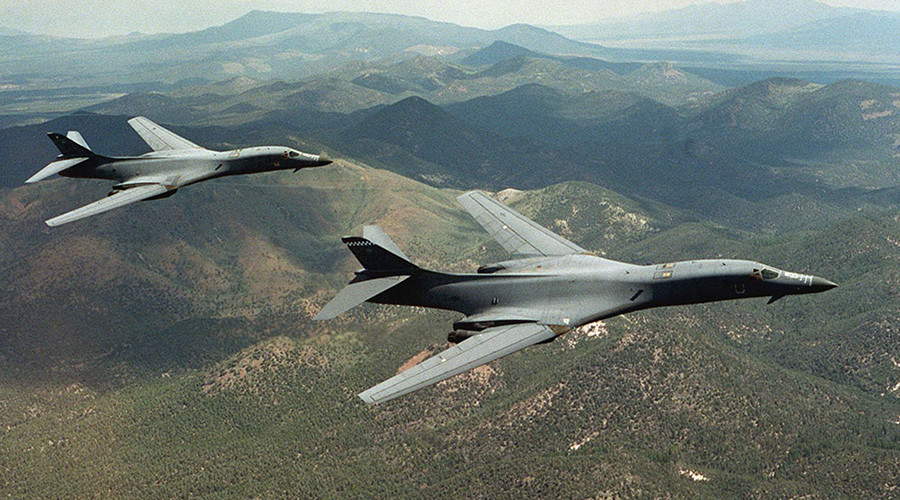
North Korea has said the recent US bomber flight over South Korea was no more than a “bluff” and a “laughing stock” for the whole world. It has nevertheless warned that such “reckless provocations” should stop.
Pyongyang state media is rarely picky with its choice of words when it comes to South Korea or the US. The latest outburst has been sparked by the flight of two supersonic B-1 Lancer strategic bombers belonging to the United States over South Korea on Tuesday.
“[This] farce is no more than a bluff to free the puppet military of rapidly growing war phobia and war-weariness and fan up war hysteria,” Minju Joson, a state-run North Korean government newspaper, said.
Its statement ended with a warning that South Korea’s cooperation with the US would only “precipitate their destruction, ridiculed by all people.”
On Wednesday, the North Korean state-run news agencyKCNA continued chiding the South for allowing the flyover to take place. They focused mainly on US involvement this time.
“These extremely reckless provocations of the US imperialist warmongers are pushing the situation on the Korean Peninsula to the point of explosion hour by hour,” the agency stated, noting that the South “had better stop their rash actions” as the North is perfectly capable of “beat[ing] back any aggression and provocation at a single blow.”
The flight of two US bombers capable of carrying an entire nuclear arsenal over South Korean Osan Air Base, south of Seoul, was intended as a show of force for Pyongyang, which conducted its fifth nuclear test on Friday, prompting a harsh response from South Korean President Park Geun-hye, who accused the North of “maniacal recklessness.”
The US recently said that any provocations from the North would come with “serious consequences.” The bomber flight also came two months after Washington and Seoul announced that they would deploy the Terminal High Altitude Area Defense (THAAD) advanced missile defense system in the South in order to counter the threat a nuclear-armed North Korea allegedly poses. The allies said they are working to have it operational by the end of 2017.